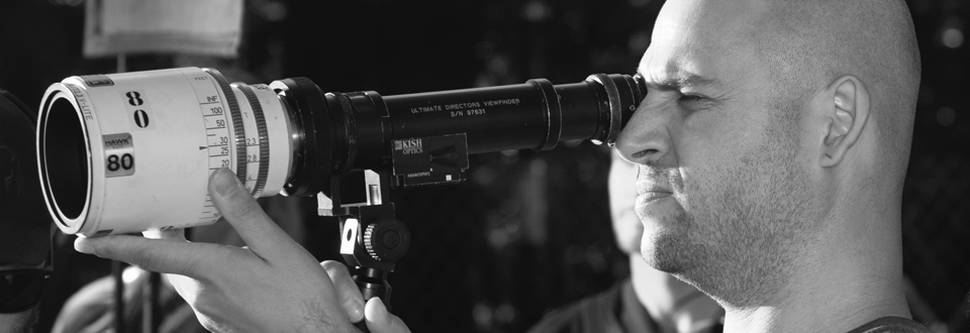
Jonathan Sela and director David Leitch have honed their approach to filmmaking over the course of three features – John Wick, Atomic Blonde, and now, Deadpool 2, which hits theaters in May. Leitch, a veteran stunt coordinator and now top director, and Sela, whose other credits include A Good Day to Die Hard and Transformers: The Last Knight, first connected while working second unit on a small independent thriller. Back, then, Sela shot mostly film.
“I grew up in film, and it’s only the last four movies that I’ve shot digital,” says Sela. “Film stock was the main way we played with the look – pushing, pulling and choosing the emulsion. All that has disappeared with digital. Now, it’s the glass you put in front of the camera that creates imperfection. Digital is so clean and sharp, so instead of the sharpest lens, I’m looking for ways to degrade the image with glass. That’s why I fell in love with Vintage ’74s.”
Hawk Vintage ’74 lenses are made by Vantage Film in Weiden, Germany, a region known for its long history of glassmaking innovation. Vintage ‘74 lenses deliver the chromatic and flare characteristics, and lower contrast, of older 1970s lenses, but with precise, state-of-the-art interoperability, consistency and dependability. Their look recalls the iconic films of the 1970s, complete with color aberrations and other “flaws.”
Sela, who was recently named to Variety’s “Billion Dollar Cinematographer” club, shot with Hawk Vintage ‘74s on John Wick and Atomic Blonde. But on Deadpool 2, the filmmakers envisioned a somewhat cleaner approach that still imbued the images with a certain amount of personality. The unique Marvel superhero character of Deadpool plays on humor and sarcasm, and the film often works as a send-up of filmic superhero clichés. The right visual strategy – an homage that didn’t take itself too seriously – was essential to success.
“When we started on Deadpool 2, I really wanted to keep working with the Vintage ‘74s, but I felt they were a little too low in contrast, flarey and hazy for this movie,” says Sela. “I wanted something in the middle, and I didn’t want to do it with filtration. I called Vantage and asked for ideas, and coincidentally they had been experimenting on a new set of lenses called class‑X. They sent me one, and we went back and forth until we found the right combination of design and construction, and the perfect amount of halation on the image. They ended up making a set of lenses that served our movie so well, some with a specific focal distance. I really like shooting close with wide lenses, and they accommodated me, giving me the opportunity to do things I otherwise couldn’t do. I was flattered that they were willing to do it. It was fun to be in a place where you can talk to technical people who can help translate your vision.”
Hawk class‑X lenses, so named because they are the tenth line of lenses designed and built by Vantage, deliver an organic, traditional 2x anamorphic look. Their design is strictly classic, but takes into consideration today’s lossless postproduction, which has made optical perfection no longer necessary or even desirable. Two sets of the class‑X lenses were produced to Sela’s specs, with one set going to the second unit. The iterative process that led to those lenses included hand-sanding and other traditional lensmaking techniques at Vantage’s facility in Bavaria.
Sela and Leitch didn’t feel obligated to replicate the look of the original film, since the character is the only major aspect unchanged in the sequel. In the new movie, color is tied to character in a subliminal, yet important way, and as you might expect, the approach to action is highly evolved and precise.
“We love to do as much as possible in camera, with the real actors,” says Sela of the action. “It might take longer, but our philosophy is that the more you see the actors, the more you feel like it’s really happening. Geography is also very important for us – I want to be sure the audience understands what’s going on, or they lose the emotion. Deadpool 2 is an action-comedy, so the jokes have to be visible, and they have to work. It’s actually really funny, and that’s something different for me.”
Like most directors of photography at the top of the game, Sela knows what the tools can do, but stays focused on the creative side of the job.
“What I do is so technical, but I try so hard to be nontechnical,” he says. “Lighting, cameras, lenses – all of the tools are just a great canvas and great brushes for me to tell a story with. It’s not just one tool or another – you need to be able to do it with everything. The more you know, the better you can solve the problems you’re faced with. That’s when you begin to improvise. It’s the mix of the unexpected that’s the beauty of creation.
“Working with the Vantage people over the course of the last three movies has been a pleasure, because they get it,” he says. “They’re great guys, and their role is to help us, support us, teach us and equip us. You can never take for granted the people working alongside you. It makes all the difference. You have to have people who take the challenge, and keep on inventing. If you don’t see that, you’re standing in the way.”
Photo Credit: Joe Lederer